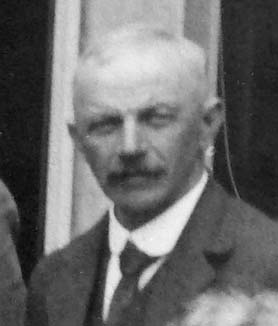


 تاريخ الرياضيات
تاريخ الرياضيات
 الرياضيات في الحضارات المختلفة
الرياضيات في الحضارات المختلفة 
 الرياضيات المتقطعة
الرياضيات المتقطعة
 الجبر
الجبر
 الهندسة
الهندسة 
 المعادلات التفاضلية و التكاملية
المعادلات التفاضلية و التكاملية 
 التحليل
التحليل
 علماء الرياضيات
علماء الرياضيات |
Read More
Date: 6-4-2017
Date: 6-4-2017
Date: 9-4-2017
|
Died: 20 December 1944 in Edinburgh, Scotland

Peter Comrie was born in Muthill, a small village just south of Crieff. His mother was Elizabeth Ritchie and his father was Peter Comrie, a master blacksmith in the village. Comrie received his school education at Muthil School and then at Morrison's Academy, Crieff, Perthshire. He first matriculated at the University of St Andrews in 1888 and in his first session he studied Greek 2, Latin 2, and Mathematics 2. In his second year he studied Natural Philosophy, Logic, English Literature, and Latin 2. Then in 1890-91 he took the courses Moral Philosophy and Political Economy, English Literature, Mathematics 3, and Chemistry. In session 1891-92 he studied the courses Natural Philosophy, Mathematics 3, Physiology, and Botany, then took Honours Natural Philosophy the following session. Comrie was awarded the Carstairs Prize (awarded to the best mathematics student in each of the three years) in 1892, the Gray Prize (awarded for an essay on a prescribed subject) in 1891, and the Arnott Prize (awarded on examination in Natural Philosophy at the end of the session) in 1892.
He was awarded an M.A. with Second Class Honours by the University of St Andrews on 3 March 1894 and a B.Sc., also by St Andrews, on 29 March in the following year. He taught mathematics as an Assistant Master in Greenock Academy, Glasgow, from 1895 to 1899, then he was appointed Head Mathematics Master at Hutcheson's Girls Grammar School, Glasgow. He held the post in Glasgow for two years from 1899 to 1901, then was appointed to Gordon's College in Aberdeen. After three years in Aberdeen he became Head of Mathematics in Boroughmuir School, Edinburgh, in 1904. In 1917 he was appointed Headmaster of Castle Hill School, Edinburgh, and at this time he lived at 19 Craighouse Terrace, Edinburgh. Then in 1922 he was appointed Rector of Leith Academy but continued to live in Craighouse Terrace. He held this post until he retired in 1933.
Comrie was elected a Fellow of the Royal Society of Edinburgh on 15 March 1909 having been proposed by Sir James Donaldson, P R Scott Lang, James Gordon MacGregor, and George A Gibson. He was awarded an honorary LL.D. from the University of St Andrews on 26 December 1928. He was also President of the Educational Institute of Scotland.
Comrie was a member of the Edinburgh Mathematical Society, joining the Society in March 1905. He served on the Committee from 1907, then was honorary secretary from 1911 to 1916. This meant that he played a major role in organising the 1913 Edinburgh Mathematical Colloquium:-
At the close of the Colloquium in the afternoon [of Friday 8 August 1913] the President, Mr Burgess, paid a tribute to the enthusiasm and energy with which the secretary, Mr Comrie, had thrown himself into the work of organising the meeting.
He was honoured by serving as President for two sessions, 1916-17 and 1917-18.
His obituary in the Edinburgh Mathematical Notes is at THIS LINK.
His obituary in The Scotsman is at THIS LINK.
John Mackie writes in [1]:-
Dr Comrie was married to Miss Charlotte Aikman, a St Andrews lady, who survives him.
Both in private and in public life he was one of the kindliest of men. He grudged neither time nor energy to further the welfare of others, and in all his work created about him an atmosphere of friendly and human companionship in carrying out a common task.



|
|
|
|
"عادة ليلية" قد تكون المفتاح للوقاية من الخرف
|
|
|
|
|
|
|
ممتص الصدمات: طريقة عمله وأهميته وأبرز علامات تلفه
|
|
|
|
|
|
|
المجمع العلمي للقرآن الكريم يقيم جلسة حوارية لطلبة جامعة الكوفة
|
|
|